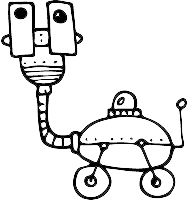If you run a SaaS company, customers are undeniably the lifeblood of your business. Therefore, some essential things on your agenda include customer acquisition and customer retention (which directly relates to lifetime value).
While customer retention tends to take a backseat, it shouldn’t. Customer retention is just as necessary, if not more, as customer acquisition. Not only is customer retention cheaper, but it’s also more effective than acquiring new customers. Even so, however, why do SaaS companies put more focus on acquisition rather than retaining their existing SaaS customers?
Before diving into the details, let’s first examine what customer acquisition and customer retention are.
Don’t wait for the muse. Apply this step-by-step method to write high-performing email campaigns in hours, not weeks.
What is customer acquisition?
Customer acquisition is the process of bringing in new customers or clients. This includes a strategy that’s both sustainable and systematic, and can evolve with any trends or changes that may arise.
What is customer retention?
Customer retention focuses on a company’s ability to turn their existing customers into repeat buyers, and prevent them from switching over to a competitor. It’s a great performance metric, indicating whether or not your customers are happy with your existing product or service.
Why do most businesses focus on customer acquisition?
There are many reasons as to why businesses focus on customer acquisition, but here are the main ones:
- Acquisition helps with boosting vanity metrics. Marketers are constantly focusing on numbers. And customer acquisition campaigns usually result in numbers that look great. You’ll be getting more visitors on your website, more daily active users, etc. While it’s easy to point to these statistics as a success, vanity metrics only look great on the surface, and aren’t valuable insights that companies can use for future strategies. Vanity metrics are often short-term wins, and are not an accurate measure of success.
- Acquisition campaigns have quick results. Customer retention is a long-term process that takes months or even years to show results. Customer acquisition, on the other hand, can be quick and easy. A standard metric is “new users” — simply because it’s a metric that companies can see immediately. A plethora of SaaS companies use customer acquisition campaigns as a quick and easy “successful” campaign, without considering if they’re the best use of funds.
- Reducing the percentage of fixed cost. Plenty of SaaS companies want to scale their customer acquisition to reduce the percentage of fixed cost. With more customers on the platform, businesses can decrease their rate of fixed costs. However, this does not mean that a company uses its marketing budget wisely.
Why is customer retention important?
While we now know that companies tend to focus exclusively on customer acquisition as it’s an exciting part of growing their company, why is customer retention necessary?
Well, the numbers don’t lie. Research has shown that if you raise your customer retention rates by a small percentage — just 5% to be exact — you could increase your profits from anywhere from 25% to up to 95%. By increasing your customer retention rates, you’ll also be increasing overall customer lifetime value.
Customer retention starts from user onboarding — the very first interaction that your customer has with your company. It’s not just about the acquisition process; it’s an experience that needs to be maintained and built over time. After all, there’s no point in spending all that money to acquire a customer if you’re just going to let them walk away. This strategy just doesn’t make sense.
Don’t wait for the muse. Apply this step-by-step method to write high-performing email campaigns in hours, not weeks.
Where are your dollars best spent?
No matter how large your company is, there are limits on the amount of money you can spend on marketing. For that reason, it’s integral to know whether you should be focusing more of your marketing budget on retention or acquisition.
Here are a couple of factors to consider when making that decision.
Acquisition is pricier
While this can vary depending on the industry you’re in; research has indicated that customer acquisition is more expensive than retention. Research shows that it costs five times more to attract new customers rather than nurture existing ones.
Why the staggering difference? With new customers, you’re starting from scratch. Not only do they not have a relationship with your brand, but they’ve also got no previous experience with your products, and have minimal trust in your company. To convert them into lifelong customers, you’ll need to spend a reasonable amount of time and money. On the contrary, as current customers have already built a relationship with your brand, there are fewer barriers to overcome.
Retention has better ROI
Acquiring customers is pricey, as there’s a good amount of upfront costs you’d need to consider. While it might seem like retention is unprofitable, stick to it for a couple of months, and it’ll generate fantastic returns. Research has indicated that just a 5% increase in customer retention could increase company revenue by up to 95%. A customer becomes more valuable as time goes by, and a robust retention strategy will help retain the current customers you have.
Satisfied customers boost word of mouth (WOM)
Word of mouth (WOM) marketing is one of the most effective forms of marketing out there. Why? Because consumers view it as a more trustworthy way to learn about company’s products than the regular social media post or website. Statistics have indicated that 92% of consumers worldwide trust user-generated content and word-of-mouth marketing more than traditional advertising. User-generated product review are the second most important factors of online shopping for U.S. shoppers 2018. By working on your retention strategy and delivering exceptional service to your customers, they’re more likely to positively talk about your company and recommend your service to friends.
How can you improve retention?
Here are some actionable customer retention strategies:
- Create and constantly revise your customer relationship roadmap.
- Always ask for regular feedback and address issues as early as possible to ensure customer satisfaction (see this podcast episode for more information on surveys).
- Build out processes for onboarding new customers to ensure that they have a smooth customer experience (manual or automated).
- Automate other customer success touchpoints throughout the customer lifecycle.
- Keep a record of all past communication that you have with the customer.
- Create a customer loyalty program that’ll provide even more value to the customer.
- Provide customers with the tools that they need to succeed (this can be in the form of a newsletter, tutorials, or support resources on your website).
With these customer retention strategies, your customers would likely advocate for your company rather than others. In effect, you’ll be getting positive publicity — all without paying a single dime. How great is that?
Should you be focusing on acquiring or retaining customers?
There isn’t a simple answer to this question, as each company is different, and has its own sets of needs and objectives. If your company is more focused on large, one-time purchases, it might be a better idea to focus on acquisition rather than retention.
But for SaaS businesses, however, focusing on retention should be the higher priority. Most SaaS companies tend to focus on subscriptions and other repeat business forms as part of their revenue. Research has shown that 65% of a company’s revenue comes from existing customers, and this statistic applies to the SaaS industry more than any other sector. As a SaaS business, it’s a no-brainer to focus most of your efforts on retaining current customers rather than acquiring new ones.
Customer retention will also help with increasing ROI in the long-run. While the acquisition is essential for a company’s growth, just focusing on acquisition alone can put a strain on your company’s finances.
Prioritizing both acquisition and retention
In the ideal world, it would be best to invest both in acquisition and retention, as you can’t have one without the other to grow your business successfully. You must have a steady stream of new customers to develop relationships before you can consider retaining them.
Suppose you’re ready to boost your customers’ happiness and improve your company’s overall outcome. In that case, it’s time to develop a realistic customer retention management strategy with the current resources that you have. By consistently keeping track of your business’s retention rates, you’ll likely be able to enjoy steady and sustainable profit and growth for years to come.
Don’t miss out on new articles. Subscribe to our newsletter and get your monthly dose of SaaS email marketing insights.






